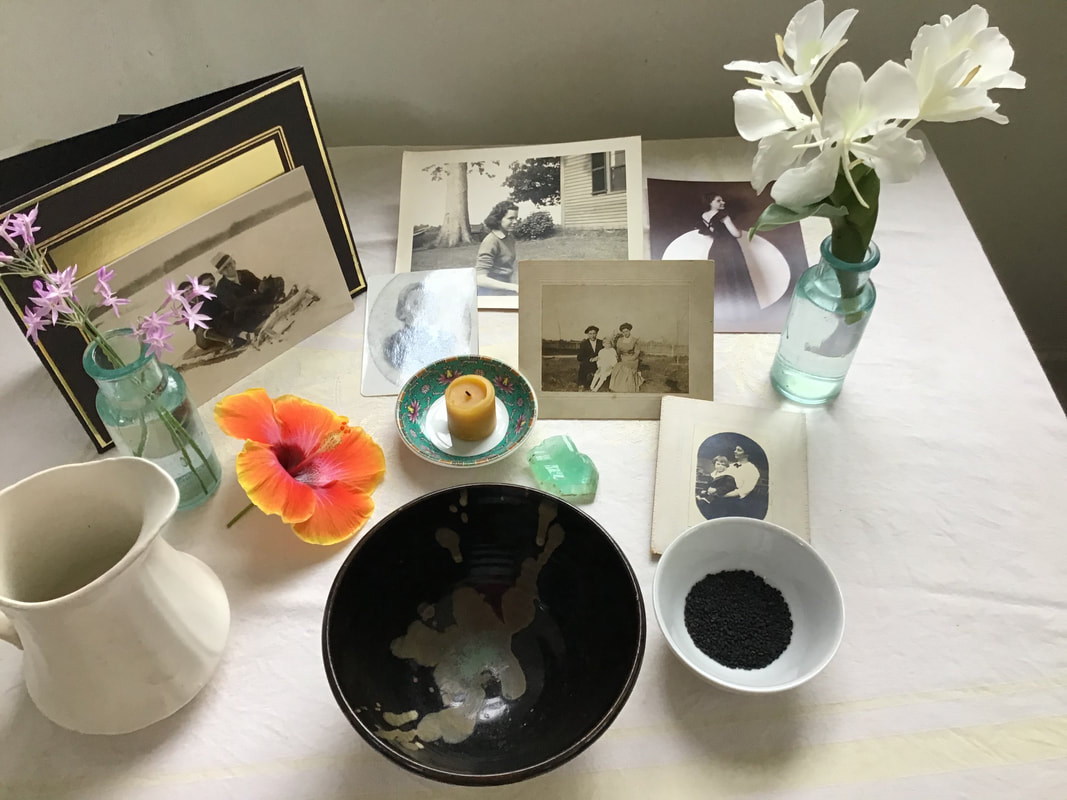Pitri Paksha is the lunar period honoring the ancestors in the Vedic tradition. In 2020 it runs from the full moon of September 1 through September 17. It is a practice worth taking up today. Pitri Paksha reunites and connects us with the wisdom carriers, our ancestors. Even if we do not know who they are, they know who we are and will support us in all we do and dream of, says Maya Tiwari, famed Ayurvedic teacher and Vedic scholar.
All traditional societies honored their ancestors. In a very real, physical sense, the lineage (DNA) of every human connects us to one another, all the way back to our origins, to Mother Earth.
The traditional way to carry out Pitri Paksha is to prepare a south-facing altar, offer water and black sesame seeds, and chant a simple mantra. South is the energetic portal for our forbears. An altar can have pictures of deceased ancestors (never use photos of living persons), ghee lamps or unscented candles, precious stones, flowers, incense and essential oils. It should be tended carefully every day. It can also be outdoors. The life-beckoning properties of seeds and water make them the auspicious choice for an offering. If black sesame seeds are unavailable, black rice can be substituted.
All traditional societies honored their ancestors. In a very real, physical sense, the lineage (DNA) of every human connects us to one another, all the way back to our origins, to Mother Earth.
The traditional way to carry out Pitri Paksha is to prepare a south-facing altar, offer water and black sesame seeds, and chant a simple mantra. South is the energetic portal for our forbears. An altar can have pictures of deceased ancestors (never use photos of living persons), ghee lamps or unscented candles, precious stones, flowers, incense and essential oils. It should be tended carefully every day. It can also be outdoors. The life-beckoning properties of seeds and water make them the auspicious choice for an offering. If black sesame seeds are unavailable, black rice can be substituted.
The seeds and water are poured through the right hand in a Gyan mudra (thumb and first finger touch to form a circle and the other fingers extended) into a bowl if indoors, and directly into the earth if outdoors. The following chant is sung or recited an auspicious number of times; 11, the sacred number of 108, for example:
Om Namo Vah Pitrah Saumyah Svaha
Om Nah-mow Vaff Pete-riss Saum-yaha Swa-ha (pronunciation)
This means: Dear ancestors I offer you my obeisance, my gratitude and regard. Kindly accept my offering.
You may end with Om Shanti, Shanti, Shanti (Peace, peace, peace)
Om Nah-mow Vaff Pete-riss Saum-yaha Swa-ha (pronunciation)
This means: Dear ancestors I offer you my obeisance, my gratitude and regard. Kindly accept my offering.
You may end with Om Shanti, Shanti, Shanti (Peace, peace, peace)
It is important to have a designated place to receive the offerings after the ceremony. Without access to a private garden, the offering can be collected and taken to a park or flowing river. It is also important to avoid the juncture times of the day: dawn, dusk, midday and midnight. If possible, choose a time that can become routine.
Your own prayers are appropriate here, whatever may be in your heart. Our ancestors may have helped us and they may have hurt us. Every ancestry needs to be healed. The practice of Pitri Paksha can allow the letting go of our genetic history and clear wounds and traumas from our forbears, awakening the healing force within all of us.
Your own prayers are appropriate here, whatever may be in your heart. Our ancestors may have helped us and they may have hurt us. Every ancestry needs to be healed. The practice of Pitri Paksha can allow the letting go of our genetic history and clear wounds and traumas from our forbears, awakening the healing force within all of us.



